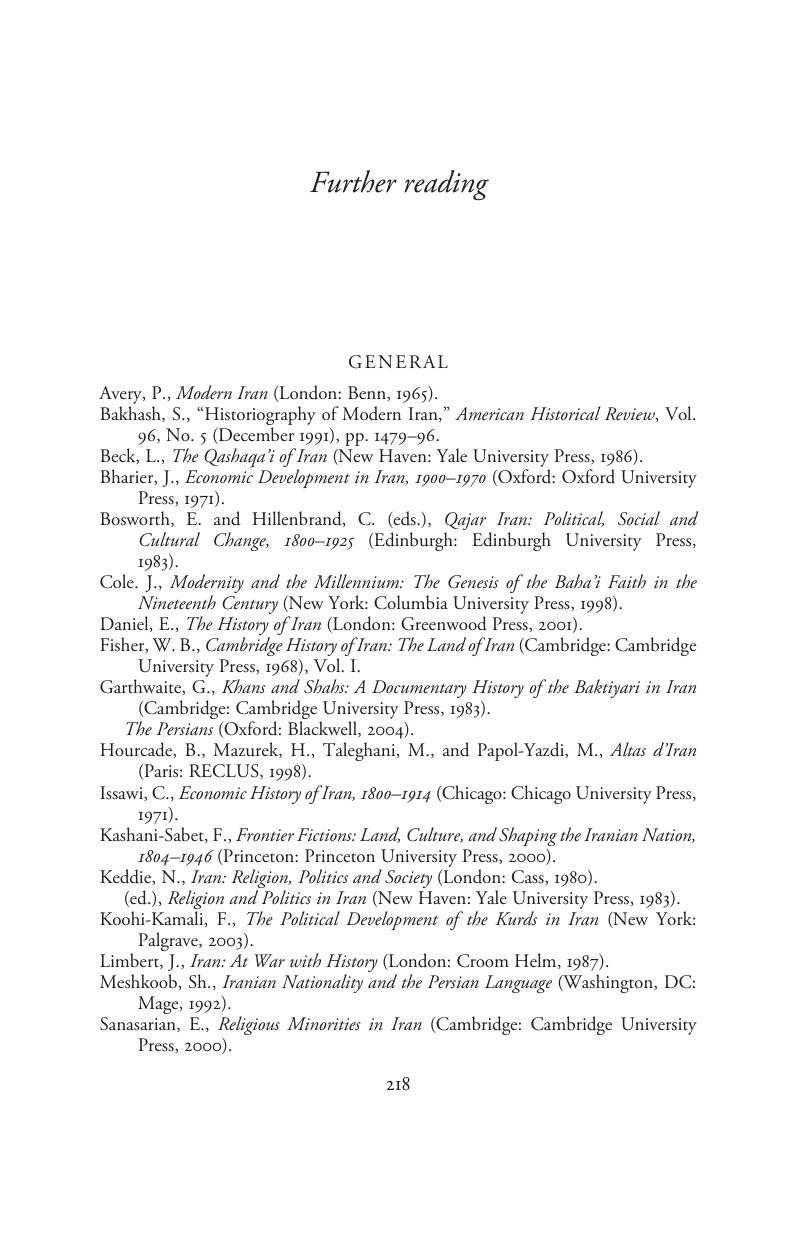Book contents
- Frontmatter
- Contents
- List of maps
- List of illustrations
- List of tables
- List of figures
- Chronology
- Glossary
- A political who's who of modern Iran
- Preface
- Map 1 Iran and the Middle East
- Map 2 Iranian provinces
- Introduction
- 1 “Royal despots”: state and society under the Qajars
- 2 Reform, revolution, and the Great War
- 3 The iron fist of Reza Shah
- 4 The nationalist interregnum
- 5 Muhammad Reza Shah's White Revolution
- 6 The Islamic Republic
- Notes
- Bibliography
- Further reading
- Index
- References
Further reading
- Frontmatter
- Contents
- List of maps
- List of illustrations
- List of tables
- List of figures
- Chronology
- Glossary
- A political who's who of modern Iran
- Preface
- Map 1 Iran and the Middle East
- Map 2 Iranian provinces
- Introduction
- 1 “Royal despots”: state and society under the Qajars
- 2 Reform, revolution, and the Great War
- 3 The iron fist of Reza Shah
- 4 The nationalist interregnum
- 5 Muhammad Reza Shah's White Revolution
- 6 The Islamic Republic
- Notes
- Bibliography
- Further reading
- Index
- References
Summary

- Type
- Chapter
- Information
- A History of Modern Iran , pp. 218 - 223Publisher: Cambridge University PressPrint publication year: 2008



